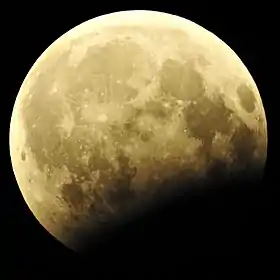August 2026 lunar eclipse
A partial lunar eclipse will take place on August 28, 2026. The moon will be almost be inside the umbra, but not quite be contained within the umbral shadow at greatest eclipse.
| Partial Lunar Eclipse August 28, 2026 | |
|---|---|
 The moon passes west to east (right to left) across the Earth's umbral shadow, shown in hourly intervals. | |
| Series | 138 (30 of 83) |
| Duration (hr:mn:sc) | |
| Partial | 3:18:07 |
| Penumbral | 5:37:46 |
| Contacts | |
| P1 | 1:23:55 UTC |
| U1 | 2:33;48 |
| Greatest | 4:12:49 |
| U4 | 5:51:55 |
| P4 | 7:01:41 |
This lunar eclipse follows the total solar eclipse of 12 August 2026.
Visibility
It will be completely visible over South and eastern North America, will be seen rising over the rest of North America, and setting over Africa and Europe.
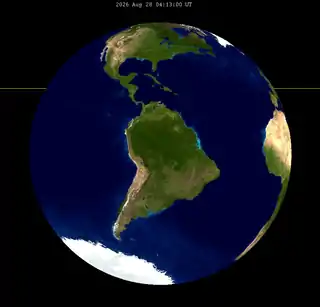
Related eclipses
Lunar year series
| Lunar eclipse series sets from 2024–2027 | ||||||
|---|---|---|---|---|---|---|
| Descending node | Ascending node | |||||
| Saros | Date | Type Viewing |
Saros | Date Viewing |
Type Chart | |
| 113 | 2024 Mar 25 |
Penumbral |
118 | 2024 Sep 18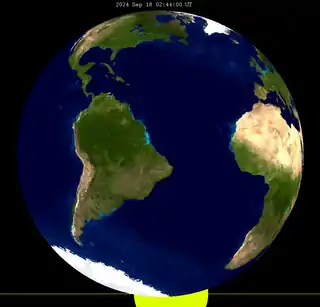 |
Partial | |
| 123 | 2025 Mar 14 |
Total |
128 | 2025 Sep 07 |
Total | |
| 133 | 2026 Mar 03 |
Total |
138 | 2026 Aug 28 |
Partial | |
| 143 | 2027 Feb 20 |
Penumbral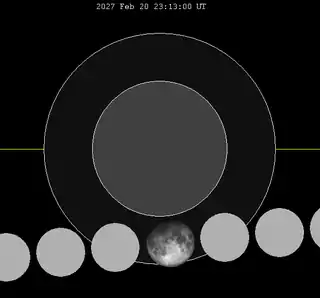 |
148 | 2027 Aug 17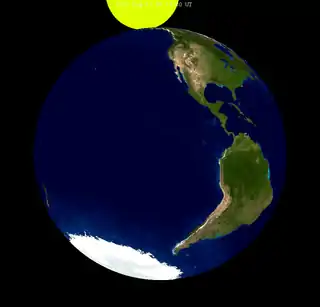 |
Penumbral | |
| Last set | 2023 May 05 | Last set | 2023 Oct 28 | |||
| Next set | 2028 Jan 12 | Next set | 2027 Jul 18 | |||
Saros series
Lunar saros series 138 has 26 total eclipses between September 7, 2044 and March 24, 2369. The longest eclipse will be on January 7, 2243, and last for 102 minutes.
Partial eclipses will occur between June 24, 1918 and August 13, 2603. Penumbral eclipses will occur between October 15, 1521 and March 30, 2982. [1]
Metonic series
The Metonic cycle repeats nearly exactly every 19 years and represents a Saros cycle plus one lunar year. Because it occurs on the same calendar date, the earth's shadow will be in nearly the same location relative to the background stars.
|
|
 |
 |
Half-Saros cycle
A lunar eclipse will be preceded and followed by solar eclipses by 9 years and 5.5 days (a half saros).[2] This lunar eclipse is related to two total solar eclipses of Solar Saros 145.
| August 21, 2017 | September 2, 2035 |
|---|---|
 |
 |
See also
- List of lunar eclipses and List of 21st-century lunar eclipses
Notes
- Hermit Eclipse: Eclipse Saros 138
- Mathematical Astronomy Morsels, Jean Meeus, p.110, Chapter 18, The half-saros
